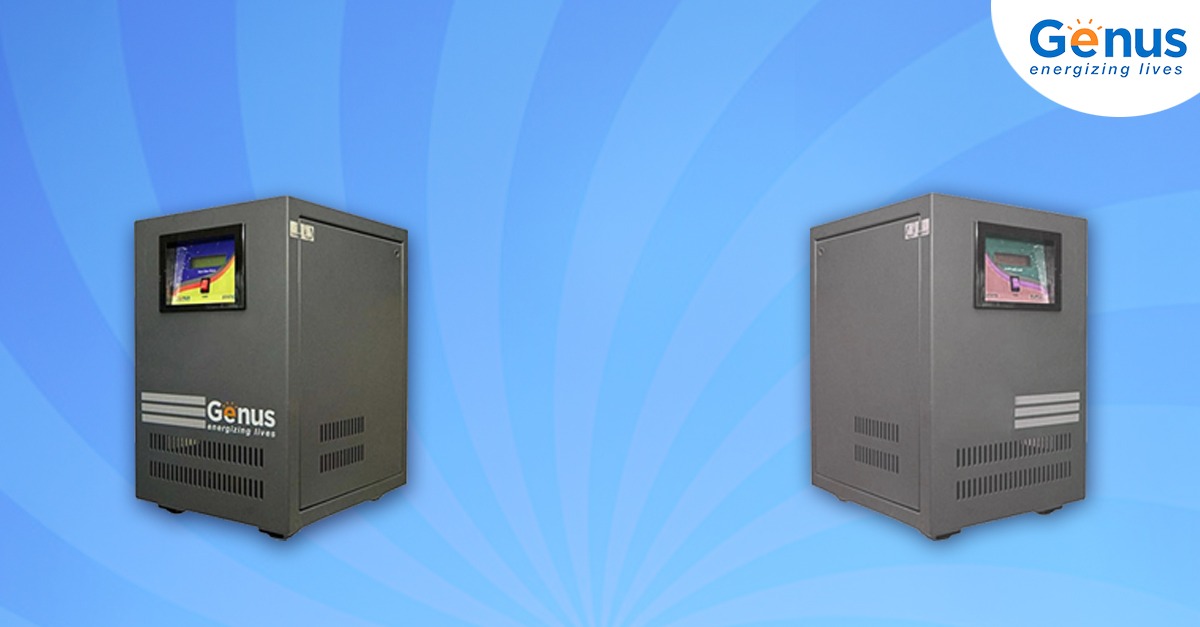In a world where the reliability of global electricity supply can be unpredictable, the need for a dependable power backup solution becomes paramount. Power cuts should not disrupt your daily life or work, and that’s where inverters come to the rescue. Before selecting an inverter, it’s crucial to understand the two main types available in the market: Sine Wave and Square Wave Inverters.
Square wave inverters, often referred to as normal inverters, convert DC power stored in batteries into AC. On the other hand, sine wave power inverters perform the same function but produce a smoother output, making them slightly more expensive. If you’re contemplating why a sine wave inverter is a preferable choice, read on.
Reasons for Opting for a Sine Wave Inverter
Zero Energy-Production Costs
- Output Wave Quality:
Sine wave inverters replicate the grid power waveform with minimal harmonic distortion, ensuring a clean and stable power supply during outages. Appliances like microwaves, air conditioners, computers, and TVs can operate safely on sine wave inverters, unlike square wave inverters that exhibit more distortion in their output. - Efficiency and Power Loss:
Premium sine wave inverters boast 90 to 95% efficiency, while medium-quality ones promise 75 to 85% efficiency. Square wave inverters, in contrast, are significantly less efficient than their sine wave counterparts. This translates to lower conversion losses in sine wave inverters, contributing to lower utility bills. - Inductive Loads Efficiency:
Sine wave inverters outperform square wave inverters in powering appliances with inductive loads, such as those utilizing electrical coils, like motors. Square wave inverters may lead to extra power consumption, overheating, and reduced lifespan of such appliances. - Noise Reduction and Glitch Prevention:
Square wave inverters can produce excessive electrical noise, potentially causing glitches in electronic equipment like computer monitors and printouts. Opting for sine wave inverters mitigates this risk, ensuring the smooth performance of sensitive equipment. - Quick Charging Feature:
Sine wave inverters offer faster charging, a critical feature in areas experiencing frequent and prolonged power cuts. This is especially essential in commercial establishments where quick charging is necessary for the seamless operation of elevators, lifts, and facilities in hospitals, hotels, and laboratories. - Cost-Effectiveness in the Long Run:
While square wave inverters may seem initially less expensive, considering the long-term perspective is crucial. Sine wave inverters provide extended power backup, have a longer lifespan, and require fewer repairs and replacements. Additionally, they safeguard sensitive appliances, saving costs on potential repairs or replacements.
Conclusion: A Smarter Investment for a Sustainable Future
Investing in a sine wave power inverter emerges as a logical choice for those prioritizing efficiency, longevity, and reduced environmental impact. Leading brands like Genus Innovation offer advanced technology, ensuring optimal efficiency and output. These inverters provide stable, clean power, cater to a wide range of appliances, and offer various models to suit diverse power backup needs and budgets.
Subscribe to our free newsletter
Stay in the loop! Subscribe to our newsletter for the latest updates, exclusive content, and exciting offers.
*By subscribing to our newsletter you agree to our Privacy Policy.






